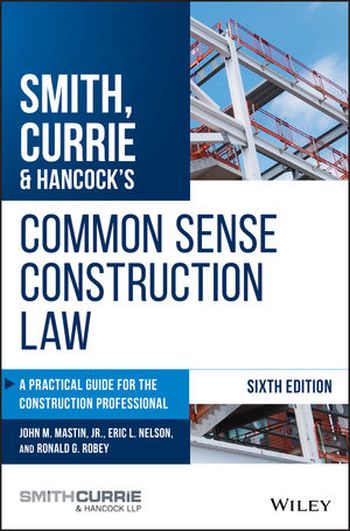
Updated and expanded to reflect the most recent changes in construction law, this practical guide teaches readersthe difficult theories, principles, and established rules that regulate the construction business. It addresses the practical steps required to avoid and mitigate risks—whether the project is performed domestically or internationally, or whether it uses a traditional design-bid-build delivery system or one of the many alternative project delivery systems.
Smith, Currie & Hancock's Common Sense Construction Law: A Practical Guide for the Construction Professional provides a comprehensive introduction to the important legal topics and questions affecting the construction industry today. This latest edition features: all-new coverage of Electronically Stored Information (ESI) and Integrated Project Delivery (IPD); extended information on the civil False Claims Act; and fully updated references to current AIA, ConsensusDocs, DBIA, and EJDC contract documents. Chapters coverthe legal context of construction; interpreting a contract; public-private partnerships (P3); design-build and EPC; and international construction contracts. Other topics include: management techniques to limit risks and avoid disputes; proving costs and damages, including for changes and claims for delay and disruption; construction insurance, including general liability, builders risk, professional liability, OCIP, CCIP, and OPPI; bankruptcy; federal government construction contracting; and more.
Filled with checklists, sample forms, and summary “Points to Remember” for each chapter, Smith, Currie & Hancock's Common Sense Construction Law: A Practical Guide for the Construction Professional, Sixth Edition is the perfect resource for construction firm managers, contractors, subcontractors, architects and engineers. It will also greatly benefit students in construction management, civil engineering, and architecture.